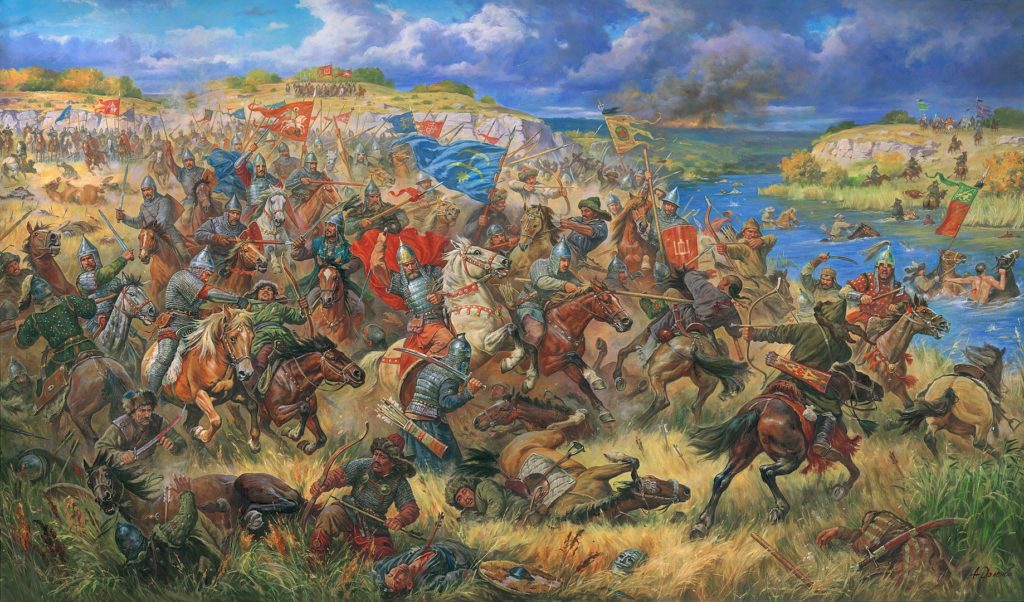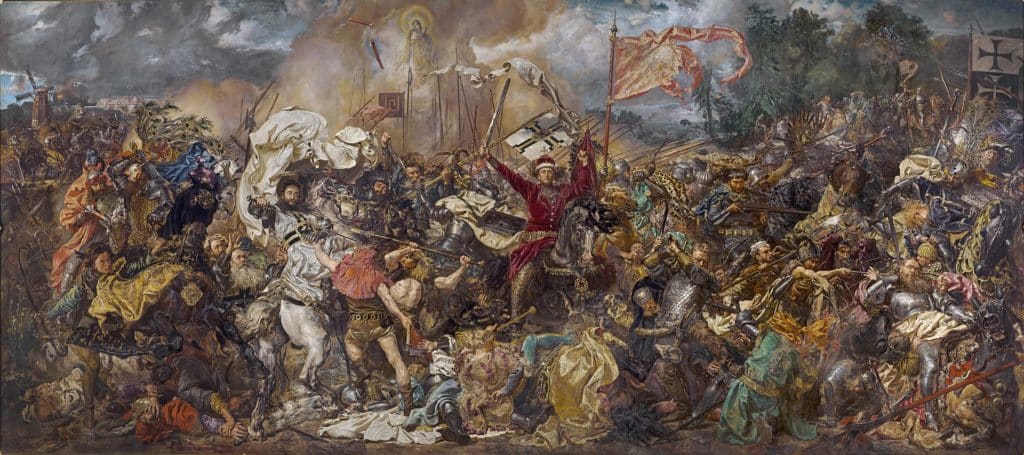This Week in History recalls memorable and decisive events and personalities of the past.
5th August 1506 – The Grand Duchy of Lithuania defeats the Crimean Khanate at the Battle of Kletsk

Through the High and Late Middle Ages, as the Mongol tide retreated, the lands of Eastern Europe, in what is today the Baltics, Belarus, Ukraine and western Russia, were dominated not by Poland, the Mongols, or the Russians but by the nation of Lithuania.
The Lithuanian kingdom, usually called the Grand Duchy of Lithuania, was originally formed out of an alliance of various pagan Baltic tribes such as the Lithuanians and Samogitians. These peoples are commonly considered the ‘last pagans of Europe’, as into the 1200s they still worshipped their version of the old pagan gods, to whom all the Indo-European people had at one time prayed. The Lithuanians still prayed to Gods such as Dievas (similar to Odin or Zeus), Perkūnas (similar to Thor), even as their neighbours to the east and south, the Rus, converted to Orthodox Christianity, and their neighbours to the west and north converted to Catholicism.
The Lithuanian state was formed as part of the efforts of these pagan tribes to resist attacks of the Catholic Teutonic and Livonian knights, who had been given permission by the Pope to stamp out the pagans and protect the Catholic Poles and Germans from their raids.
During the course of the 13th century, the Lithuanian dukes rapidly expanded their territory from their base in the modern Baltic States to control much of modern-day Belarus and Ukraine. During this period the Lithuanian rulers often converted to Christianity, only to return to paganism once the political winds shifted. In 1321 the Lithuanians captured Kiev. These areas had been ravaged or conquered by the Mongols, who halted their expansion on the borders of the Lithuanian homeland and its dark forests. When the Mongols began to weaken, Lithuania was the only state in the region able to exploit the power vacuum.
During the mid to late 14th century the Lithuanians established their dominance by smashing Mongol armies from the Golden Horde in a number of battles and became the undisputed masters of eastern Europe.

Their advance into the steppe lands was eventually checked after an invasion of Crimea saw them defeated in 1399 by a Mongol army of the Golden Horde.
Originally the Baltic pagans had been enemies of their Slavic neighbours in Poland, and fear of the pagans had encouraged the Poles to ask the Pope for the help of crusading knights. By the dawn of the 15th century, however, the Poles had come to fear the expansionist Teutonic Knights as much as the Lithuanians did, and the two nations began to cooperate.

In 1387, Lithuania was properly Christianized by Duke Jogaila, who had formed a powerful alliance with Poland by marrying the Queen of Poland, Jadwiga. The two kingdoms would fight the Teutonic Knights together in 1410 and win the decisive Battle of Grunwald, which permanently crippled the Teutonic Knights.
This alliance would strengthen over time until the two kingdoms formed the Polish-Lithuanian Commonwealth in 1569.
During the 15th century, the Grand Duchy of Muscovy began to establish itself among the Rus principalities. Moscow and the Lithuanians would come to blows during in a series of wars between 1487 and 1537.

It was during these conflicts that early in the 16th century the Lithuanians became involved in the internal squabbles of the Crimean Khanate. The Crimean Khanate had been formed by Hacı I Giray as a breakaway state of the Golden Horde and dominated the area which is today southern Ukraine.

For the most part Crimea and the Lithuanians were enemies.
In the 1840s, however, with the help of the Ottomans, Hacı I Giray was deposed by his son Meñli I Giray.
Meñli then proceeded to ally himself with the Muscovites and threaten the Lithuanians’ southern border.
The Lithuanians decided to support Hacı’s return to the throne of the Khanate with the promise that he would ally with them rather than Muscovy.
A Crimean raid into Lithuania in 1503 threatened the Lithuanian capital but was eventually driven back, and then in 1506 they counter-attacked.
A Lithuanian noble called Michael Glinski led the attack on the Crimean camp at Kletsk.
A force of 7 000 Lithuanians faced off against 20 000 Crimeans. After a fierce and chaotic battle, the Lithuanians were triumphant, smashing the Crimean army and driving it back to its homeland.
In the aftermath, the Crimeans would break their alliance with Muscovy.
If you like what you have just read, support the Daily Friend

